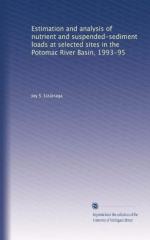|
This section contains 351 words (approx. 2 pages at 300 words per page) |
Sedimentation occurs when the velocity of flowing water is reduced, causing its load of suspended, insoluble materials to drop to the bottom (the faster water is flowing, the greater the amount of suspended material it can carry, and the larger the particle sizes).
In most cases, the insoluble materials suspended in a watercourse (such as a stream or river) are derived from the erosion of soil in the watershed (this is the area of land from which water drains into a waterbody). Erosion may be caused by natural processes, such as slumping of the earthen banks of unstable mountain slopes, particularly during times of the year when water flows are high. Rivers draining glaciers also have naturally high loads of suspended materials. However, in many other cases, erosion is caused by disturbances associated with some human activity, such as road-building across watercourses, deforestation, or improper methods of cultivation in agriculture.
In some situations, enormous amounts of sedimented material may accumulate. Deltas, for example, represent the accumulated load of riverine sediment. Some deltaic formations are extremely large, such as those of the Mississippi, Amazon, and Nile Rivers. Deltas are mostly composed of relatively fine-sized particles, such as clay, silt, and sand (depending on the velocity of flow at the site of deposition). Large sedimentary deposits may also accumulate in lakes that receive the flow of rivers; the extensive clay and silt plains of parts of the prairies and Great Lakes basin of North America were laid down in post-glacial lakebeds, which were much more extensive when the continental glaciers were melting back some 10-15,000 years ago.
Sedimentation can be an important environmental problem, particularly where human activities have greatly increased the intensity of this process. Excessive sedimentation can result in rivers having a much shallower basin than occurred historically, causing extensive flooding during high-flow periods during the springtime snow-melt, or after heavy rainfall events. The flooding can damage agricultural land, buildings, and roads, while endangering human lives. Sedimentation can also cause severe ecological damage, for example, by covering up the gravel spawning beds of fish (such as salmon and trout).
|
This section contains 351 words (approx. 2 pages at 300 words per page) |


